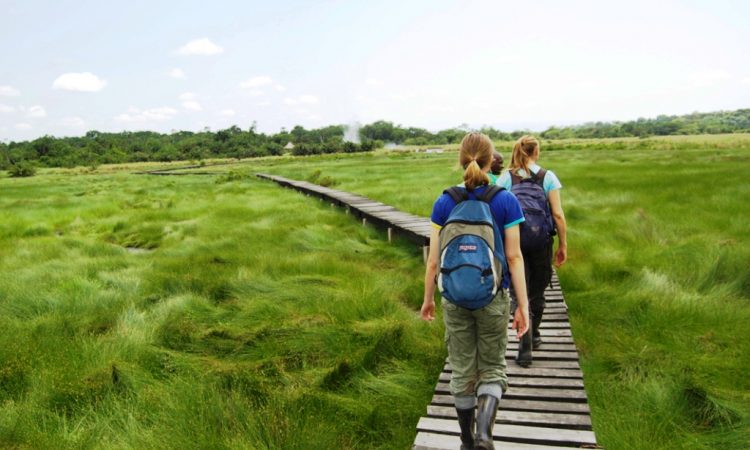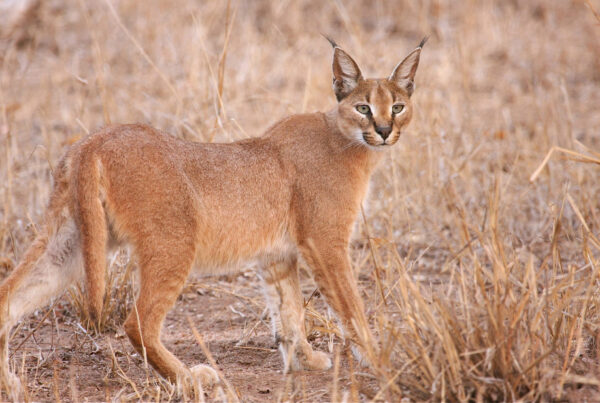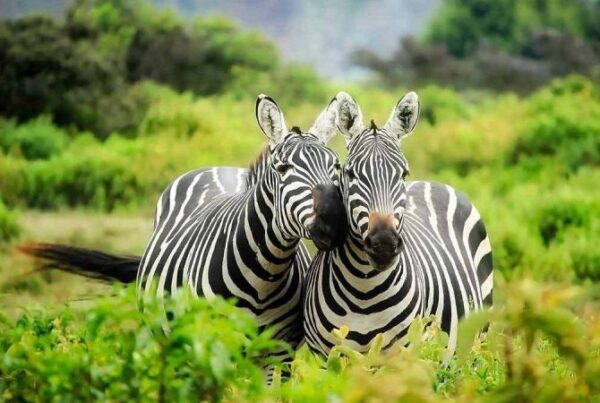Semuliki National Park Photo Essay to Game Drive for Weekenders
Where the Wild Meets the Lens
Hidden within the depths of Uganda’s western frontier, Semuliki National Park unfolds as an enigmatic paradise where tropical rainforests, river valleys, and vast savannahs converge to create a canvas of breathtaking beauty. For the weekender with a passion for both photography and exploration, this park presents a rare opportunity—an arena where the camera captures more than just images, but the very spirit of the wild.
Unlike the well-trodden paths of other Ugandan parks, Semuliki exudes an untouched charm, a wilderness where every corner whispers stories of biodiversity and culture. The allure lies in its rawness; an authentic, less commercialized haven where encounters with nature feel deeply personal. For those embarking on a weekend escape, a photo essay transforms into a living narrative, seamlessly blending into the thrill of game drives, birdwatching, and cultural encounters.
The Landscape That Frames the Lens
Semuliki National Park lies along the floor of the Albertine Rift, a geological wonder that has carved landscapes of immense drama and diversity. As lenses are raised towards the horizon, the backdrop is no ordinary view. Towering Rwenzori ranges loom majestically to the northeast, while the Congo’s Ituri forest stretches unseen across the border to the west. The park itself is blanketed by one of Africa’s oldest rainforests, a living relic that has stood resilient through climatic shifts for centuries.
In a weekend exploration, every photograph taken becomes a testimony to this complexity of ecosystems. From swampy valleys rich with birdlife to hot springs that bubble mysteriously in Sempaya, the park offers an ever-changing palette of textures and tones. The dense vegetation allows beams of golden sunlight to filter through, creating dramatic lighting that photographers dream of. Here, the camera is not just an accessory but an extension of the eye, documenting what the human mind struggles to fully absorb.
Wildlife Encounters Through a Photographer’s Lens
The essence of a photo essay at Semuliki is embodied in its extraordinary wildlife diversity. Unlike larger parks dominated by vast savannah herds, Semuliki’s treasures reveal themselves more intimately. On a game drive, the shutter clicks capture images of forest elephants, often distinguished by their smaller size and darker hides, appearing like elusive shadows among the dense foliage. Buffaloes roam gracefully across the plains, while waterbucks and duikers provide moments of quiet grace against the green backdrop.
Bird photography, however, remains the park’s crown jewel. Over 440 species have been recorded, making Semuliki a sanctuary for birders armed with cameras. The sought-after shoebill stork, with its prehistoric bill and statuesque stance, commands the marshlands, offering iconic images for those fortunate enough to spot it. Equally captivating are the hornbills, turacos, and vibrant bee-eaters, which transform the rainforest canopy into a kaleidoscope of colors. Every captured frame becomes a visual symphony, narrating the richness of Semuliki’s avian kingdom.
Predators, though less frequently seen, add intensity to the weekend adventure. Leopards may be glimpsed with patience, their stealthy movements captured fleetingly through the lens. Night game drives, permitted in certain areas, allow cameras to capture the secretive nocturnal world—genets, civets, and owls emerging from the shadows.
The Cultural Frame: Bamba and Batwa Communities
No photo essay of Semuliki would be complete without acknowledging its cultural tapestry. Alongside the natural splendor live the Bamba and Batwa people, custodians of traditions that echo through generations. For weekenders seeking to balance wildlife photography with cultural storytelling, moments spent among these communities create deeply human frames.
Photographs taken here are not mere portraits; they are windows into ancestral heritage. The Bamba, known for their farming traditions, embody resilience in the fertile yet challenging landscapes. The Batwa, often referred to as forest keepers, reveal connections to the rainforest that stretch back centuries. Capturing their dances, crafts, and daily lives enriches a photo essay with narratives that go beyond wildlife, reminding the traveler that Semuliki is not only about species conservation but also cultural preservation.
The Sempaya Hot Springs: Nature’s Living Canvas
Among Semuliki’s most photogenic wonders are the Sempaya Hot Springs, often called the “male” and “female” springs, which draw awe for both their mystique and visual drama. The steam rising from the earth, set against lush vegetation, creates surreal imagery that blends science, culture, and natural beauty. Local traditions weave myths around these bubbling cauldrons, making them not only geological marvels but also cultural icons.
For photographers, these springs offer opportunities to experiment with light, steam, and motion. In the early morning hours, when mist dances with sunlight, the springs take on an almost spiritual quality, allowing images that seem painted rather than captured. For weekenders with limited time, these springs provide an essential stop where memory cards fill quickly with unforgettable visuals.
The Game Drive Experience for Weekenders
A weekend in Semuliki often centers on the game drive experience, where open trails carve through forested areas and savannah landscapes. Unlike the sprawling savannahs of Queen Elizabeth or Murchison Falls, Semuliki’s drives are defined by intimacy and surprise. Vehicles move quietly along narrow tracks, and the sudden appearance of a forest elephant or a troop of baboons transforms the moment into a heart-racing encounter.
For photographers, these drives are not rushed. Each pause becomes an opportunity to frame the subject with patience, to wait for the perfect alignment of light and movement. Even the stillness of the forest holds photographic potential, where macro lenses capture the intricate details of butterflies, insects, and flora that thrive within this ancient ecosystem. A weekend here ensures that even short drives produce galleries of timeless images, each narrating a different dimension of the park.
When to Capture the Essence of Semuliki
Timing defines the success of both photo essays and game drives. The dry seasons, from December to February and June to August, offer clearer skies, firmer trails, and increased visibility of wildlife. For photographers, these months also provide the best natural lighting conditions, with softer sunrises and sunsets casting warm tones across the rainforest and savannah.
Yet the wet season, often avoided by casual travelers, should not be dismissed. The rains drape the park in a deep green vibrancy, and dramatic cloud formations dominate the skies. Though roads become challenging, the photographs captured during these months carry a richness that is unmatched. For a weekender willing to embrace unpredictability, the wet season transforms into a rewarding photographic challenge.
The Narrative Beyond the Lens
A photo essay created in Semuliki National Park is never just a collection of images. It is a story told through lenses, a reflection of nature’s grandeur and the resilience of communities that live alongside it. The game drives add dynamism to this narrative, while cultural experiences ground it in human connection. Together, they create a holistic weekend escape where every moment is both lived and documented.
The uniqueness of Semuliki lies in its ability to feel timeless, as though the forest and its creatures exist outside the rhythms of modern life. For the traveler, this timelessness becomes a gift—an invitation to step away from routine and immerse oneself in a world where beauty reigns untamed.
A Gateway to Luxury and Conservation with WildHorn Africa
For those inspired to transform their weekend escape into a curated journey of elegance, WildHorn Africa stands as the ideal companion. With expertise in blending luxury with adventure, WildHorn Africa ensures that every photo essay and game drive in Semuliki becomes an experience tailored to sophistication and authenticity. Their dedication to detail transforms a simple weekend getaway into a seamless narrative of comfort, exclusivity, and discovery.
By choosing WildHorn Africa, travelers not only embrace Uganda’s hidden gems but also contribute to sustainable tourism that preserves the beauty of places like Semuliki for generations to come. A photo essay in this national park deserves more than spontaneity; it deserves the careful orchestration of experts who understand the language of the wild.





 WildHorn Africa – Authentic and unforgettable tours across Africa, guided by local experts who know the land, wildlife, and culture best.
WildHorn Africa – Authentic and unforgettable tours across Africa, guided by local experts who know the land, wildlife, and culture best.


